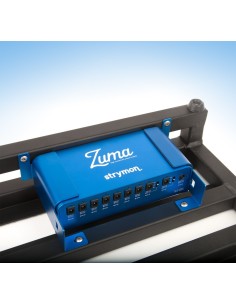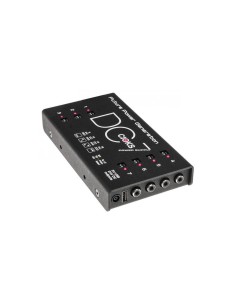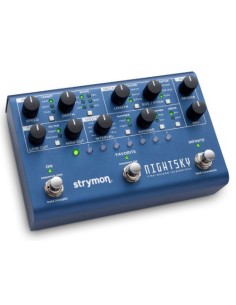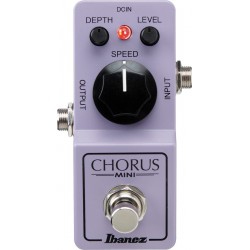K-field (Simulation mathematics), an undefined, two-dimensional, non-linear field where past and future forces interact at irregular intervals. Shallow Water generates this k-field by randomly modulating a short time delay to create unexpected shifts in pitch. The result is this non cyclical vibrato/chorus/flanger-type thing favouring old tape flavours.
ABSTRACT
Shallow Water’s essence could be characterized as uncertain, subtle and nostalgic. Practically, this describes an effect built around your typical analogue chorus/vibrato circuit wherein the signal is delayed by a few dozen milliseconds using a bucket brigade device. Another signal then modulates this delay time to create changes in pitch, called vibrato. Chorus is achieved by mixing the original signal with the delayed signal, creating the moving comb filters that tickle our ears and feather our bangs. Still, major differences can be noticed when studying the k-field modulator’s architecture. The most striking are how the delay time is modulated in a random fashion and how the recovery filter moves in relation to the input signal. Both these differences place Shallow Water in a category of its own, appropriately called k-field modulators. As the present gets lost, the future becomes the past.
PSEUDO RANDOM GENERATOR
The random quality of the modulation begins in a simple pro- gram residing on a microcontroller. Its output resembles steps of random voltages, seperated by random time intervals. The RATE control effectively sets the overall range of these time intervals. INTEGRATOR AND DEPTH These random stepped voltages are processed through a filter/ integrator, giving control over the slope at which the steps will reach their new values. As DAMP is increased, the random steps become slow and sluggish, instead of sharp and abrubt. DEPTH defines the amount of modulation that will be used to modulate the time delay of our input signal. There is a strong interaction between all three controls affecting modulation; that is, RATE, DAMP and DEPTH. ENVELOPE FOLLOWER AND RECOVERY FILTER Once the input signal has passed through the delay line, a recovery filter and some kind of gate is necessary to remove unwanted noise generated by the bucket brigade device. To achieve this, the input’s envelope is followed and used to mod- ulate the frequency of a low pass filter. The amount of envelope is set by the LPG control, yielding bouncy, lo-fi responses to quick and snappy gate-like behaviours.
Specifications:
- - 1/4” mono input/output jacks - 2.1mm DC connector
- - 4.7” x 3.8” enclosure dimensions
- - true bypass
- - input impedance 1MΩ
- - output impedance 2kΩ
- - power supply 9 to 9.6 VDC
- - current draw 40 mA max.
NOTES ON POWERING
Shallow Water was designed to operate using your typical centre negative, regulated 9-9.6 VDC power supply. The pedal is protected against reversed polarity and overvoltage conditions. Always check your power supply for proper voltage and polarity before con- necting. There is no battery connection inside the pedal.
CONTROLS
RATE The RATE control adjusts the time intervals at which the random pitch fluctuations occur. From rare to nervous, the range is quite wide. At high RATE and DAMP settings, the quick variations have trouble pass- ing through the swampy filter and integrator, effectively reducing per- ceived modulation. This is normal. The interaction between these two knobs is particular and needs to be tamed through experimentation.
DAMP The DAMP control affects the slope of the modulating signal. At its minimum, the pitch modulations are quick and sudden; the random changes in modu- lation voltage are almost instantane- ous. Increasing DAMP will elongate and soften the modulation. At high DAMP settings, the changes become so slow that they are not heard as pitch modulations. To hear the changes, some dry mix needs to be applied. Then, the slow movement of the delay time can be heard as chorus. DEPTH The DEPTH knob adjusts the intensity of the modulation. The interaction between all three modulation controls is noticeable. The range of modulation is focused towards subtle variations. Adjust to taste, though less is more
LPG
The LPG control adjusts the level of the envelope go- ing to the low pass filter and gate circuit. At lower levels the signal will be darker, choke subtle notes and reduce sustain. At higher settings, the sound will be brighter, have more sustain and might reveal some noise produced by the bucket brigade device. MIX The MIX control balances between the dry and wet signal. When it’s full wet (clockwise) the effect is like a vibrato. Chorus-type sounds are achieved by adding some of the dry signal (counter clockwise). VOLUME The VOLUME knob controls the output volume. Unity is around noon and beers around 5 at my place.
MORE CONTROL INSIDE BOOST AND PAD There are 2 jumpers at the input stage to match your input signal’s level and impedance. By default, BOOST is on, PAD is off; a typical set- ting for high impedance, low output signals like a guitar’s single coil pickups. If the user finds there is too much distortion at the input stage, moving the BOOST jumper to its off position will reduce overall gain by 6 dB. If the signal source is line- level, the PAD can be set to its on position, giving another 6 dB of gain reduction while also reducing the input impedance by a factor of 10. LPG ADJUST The recovery filter’s lowest frequency can be ad- justed, to fine tune the way it will react to incom- ing signals. Lowering this frequency emphasises the action of the low pass filter, effectively raising the threshold of sensitivity. Adjustment should be made with the following settings: MIX full wet, LPG minimum, DEPTH minimum. While listening to a signal going through the pedal, you’ll hear the effect of the recovery filter at its resting state. Carefully turn the trimpot labelled LPG adjust, clockwise to raise the filter’s frequency, counter- clockwise to lower. Be very careful, adjustments should be minimal as the trimpot is very sensitive. After each adjustment, LPG should be turned up momentarily to listen at the envelope’s response to the incoming signal.























